Product References
Elevated 18:0 lysophosphatidylcholine contributes to the development of pain in tissue injury.
Pain
Friston DA,Cuddihy J,Souza Luiz J,Truong AH,Ho L,Basra M,Santha P,Oszlacs O,de Sousa Valente J,Marczylo T,Junttila S,Laycock H,Collins D,Vizcaychipi M,Gyenesei A,Takats Z,Jancso G,Want E,Nagy I
PA5-17869 was used in Immunohistochemistry-immunofluorescence to report that, amongst other important metabolite changes, lysophosphatidylcholines (LPCs) including 18:0 LPC exhibit significant and consistent local burn injury-induced changes in concentration.
Wed Feb 01 00:00:00 EST 2023
Inhibition of DYRK1A, via histone modification, promotes cardiomyocyte cell cycle activation and cardiac repair after myocardial infarction.
EBioMedicine
Lan C,Chen C,Qu S,Cao N,Luo H,Yu C,Wang N,Xue Y,Xia X,Fan C,Ren H,Yang Y,Jose PA,Xu Z,Wu G,Zeng C
PA5-17869 was used in Sample Preparation to reveal a significant role of DYRK1A in cardiac repair and suggest a drug target with translational potential for treating cardiomyopathy.
Mon Aug 01 00:00:00 EDT 2022
'Shared-Hook' and 'Changed-Hook' Binding Activities of Herpesviral Core Nuclear Egress Complexes Identified by Random Mutagenesis.
Cells
Lösing J,Häge S,Schütz M,Wagner S,Wardin J,Sticht H,Marschall M
PA5-17869 was used in Immunocytochemistry-immunofluorescence to provide improved insights into herpesviral nuclear egress complex (NEC) protein binding specificities of core NEC formation.
Tue Dec 13 00:00:00 EST 2022
Proteomic analysis reveals USP7 as a novel regulator of palmitic acid-induced hepatocellular carcinoma cell death.
Cell death & disease
Saha S,Verma R,Kumar C,Kumar B,Dey AK,Surjit M,Mylavarapu SVS,Maiti TK
PA5-17869 was used in Flow cytometry/Cell sorting to provide evidence of PA-induced hepatocellular death mediated by deubiquitinase USP7 downregulation and subsequent mitotic catastrophe.
Wed Jun 22 00:00:00 EDT 2022
Regorafenib Induces Senescence and Epithelial-Mesenchymal Transition in Colorectal Cancer to Promote Drug Resistance.
Cells
Kehagias P,Kindt N,Krayem M,Najem A,Agostini G,Acedo Reina E,Bregni G,Sclafani F,Journe F,Awada A,Ghanem GE,Hendlisz A
PA5-17869 was used in Immunocytochemistry-immunofluorescence to provide new insights into the phenotypic plasticity of CRC cells able, under treatment pressure, to acquire a stable TIS or to use an early senescence state to undergo EMT.
Fri Nov 18 00:00:00 EST 2022
The exocyst complex regulates C. elegans germline stem cell proliferation by controlling membrane Notch levels.
Development (Cambridge, England)
Pushpa K,Dagar S,Kumar H,Pathak D,Mylavarapu SVS
PA5-17869 was used in Immunohistochemistry to reveal that the exocyst complex regulates C. elegans GSC proliferation by modulating Notch signaling cell autonomously.
Sun Aug 01 00:00:00 EDT 2021
MicroRNA Signatures of the Developing Primate Fovea.
Frontiers in cell and developmental biology
Fishman ES,Louie M,Miltner AM,Cheema SK,Wong J,Schlaeger NM,Moshiri A,Simó S,Tarantal AF,La Torre A
Published figure using Phospho-Histone H3 (Ser10) polyclonal antibody (Product # PA5-17869) in Immunohistochemistry
Sat Jul 16 00:00:00 EDT 2022
Translation of Tudor-SN, a novel terminal oligo-pyrimidine (TOP) mRNA, is regulated by the mTORC1 pathway in cardiomyocytes.
RNA biology
Gan S,Su C,Ma J,Liu M,Cui X,Xin L,Ren Y,Gao X,Ge L,Wei M,Yang J
PA5-17869 was used in Immunocytochemistry to suggest that the translational efficiency of Tudor-SN is regulated by the mTORC1 pathway in myocardia and that Tudor-SN is involved in mTORC1-mediated regulation of cardiomyocytic proliferation and cardiac development.
Tue Jun 01 00:00:00 EDT 2021
Human Taste Cells Express ACE2: a Portal for SARS-CoV-2 Infection.
bioRxiv : the preprint server for biology
Doyle ME,Appleton A,Liu QR,Yao Q,Mazucanti CH,Egan JM
PA5-17869 was used in Immunohistochemistry to investigate whether ACE2 is expressed on taste receptor cells (TRCs) nor if TRCs are infected directly.
Wed Apr 21 00:00:00 EDT 2021
Human Taste Cells Express ACE2: a Portal for SARS-CoV-2 Infection.
bioRxiv : the preprint server for biology
Doyle ME,Appleton A,Liu QR,Yao Q,Mazucanti CH,Egan JM
PA5-17869 was used in Immunohistochemistry to investigate whether ACE2 is expressed on taste receptor cells (TRCs) nor if TRCs are infected directly.
Wed Apr 21 00:00:00 EDT 2021
Functional assessment of the "two-hit" model for neurodevelopmental defects in Drosophila and X. laevis.
PLoS genetics
Pizzo L,Lasser M,Yusuff T,Jensen M,Ingraham P,Huber E,Singh MD,Monahan C,Iyer J,Desai I,Karthikeyan S,Gould DJ,Yennawar S,Weiner AT,Pounraja VK,Krishnan A,Rolls MM,Lowery LA,Girirajan S
PA5-17869 was used in Western Blot to suggest that several 16p12.1 genes sensitize the genome towards neurodevelopmental defects, and complex interactions with "second-hit" genes determine the ultimate phenotypic manifestation.
Thu Apr 01 00:00:00 EDT 2021
Functional assessment of the "two-hit" model for neurodevelopmental defects in Drosophila and X. laevis.
PLoS genetics
Pizzo L,Lasser M,Yusuff T,Jensen M,Ingraham P,Huber E,Singh MD,Monahan C,Iyer J,Desai I,Karthikeyan S,Gould DJ,Yennawar S,Weiner AT,Pounraja VK,Krishnan A,Rolls MM,Lowery LA,Girirajan S
PA5-17869 was used in Western Blot to suggest that several 16p12.1 genes sensitize the genome towards neurodevelopmental defects, and complex interactions with "second-hit" genes determine the ultimate phenotypic manifestation.
Thu Apr 01 00:00:00 EDT 2021
Human Type II Taste Cells Express Angiotensin-Converting Enzyme 2 and Are Infected by Severe Acute Respiratory Syndrome Coronavirus 2 (SARS-CoV-2).
The American journal of pathology
Doyle ME,Appleton A,Liu QR,Yao Q,Mazucanti CH,Egan JM
PA5-17869 was used in Immunohistochemistry-immunofluorescence to demonstrate the possibility that novel and sudden taste changes, frequently reported in COVID-19, may be the result of direct infection of taste papillae by SARS-CoV-2.
Wed Sep 01 00:00:00 EDT 2021
Progesterone, via yes-associated protein, promotes cardiomyocyte proliferation and cardiac repair.
Cell proliferation
Lan C,Cao N,Chen C,Qu S,Fan C,Luo H,Zeng A,Yu C,Xue Y,Ren H,Li L,Wang H,Jose PA,Xu Z,Zeng C
PA5-17869 was used in Western Blotting to uncover a role of circulating progesterone withdrawal as a novel mechanism for the postnatal loss of mammalian cardiac regenerative potential.
Sun Nov 01 00:00:00 EDT 2020
Progesterone, via yes-associated protein, promotes cardiomyocyte proliferation and cardiac repair.
Cell proliferation
Lan C,Cao N,Chen C,Qu S,Fan C,Luo H,Zeng A,Yu C,Xue Y,Ren H,Li L,Wang H,Jose PA,Xu Z,Zeng C
PA5-17869 was used in Western Blotting to uncover a role of circulating progesterone withdrawal as a novel mechanism for the postnatal loss of mammalian cardiac regenerative potential.
Sun Nov 01 00:00:00 EDT 2020
Progesterone, via yes-associated protein, promotes cardiomyocyte proliferation and cardiac repair.
Cell proliferation
Lan C,Cao N,Chen C,Qu S,Fan C,Luo H,Zeng A,Yu C,Xue Y,Ren H,Li L,Wang H,Jose PA,Xu Z,Zeng C
PA5-17869 was used in Western Blotting to uncover a role of circulating progesterone withdrawal as a novel mechanism for the postnatal loss of mammalian cardiac regenerative potential.
Sun Nov 01 00:00:00 EDT 2020
Progesterone, via yes-associated protein, promotes cardiomyocyte proliferation and cardiac repair.
Cell proliferation
Lan C,Cao N,Chen C,Qu S,Fan C,Luo H,Zeng A,Yu C,Xue Y,Ren H,Li L,Wang H,Jose PA,Xu Z,Zeng C
PA5-17869 was used in Western Blotting to uncover a role of circulating progesterone withdrawal as a novel mechanism for the postnatal loss of mammalian cardiac regenerative potential.
Sun Nov 01 00:00:00 EDT 2020
Agrin Promotes Limbal Stem Cell Proliferation and Corneal Wound Healing Through Hippo-Yap Signaling Pathway.
Investigative ophthalmology & visual science
Hou L,Fu W,Liu Y,Wang Q,Wang L,Huang Y
PA5-17869 was used in Western Blotting to show how agrin promotes the proliferation of limbal stem cells and accelerates the healing rate of cornceal would through Hippo-Yap signalling pathway.
Mon May 11 00:00:00 EDT 2020
Agrin Promotes Limbal Stem Cell Proliferation and Corneal Wound Healing Through Hippo-Yap Signaling Pathway.
Investigative ophthalmology & visual science
Hou L,Fu W,Liu Y,Wang Q,Wang L,Huang Y
PA5-17869 was used in Western Blotting to show how agrin promotes the proliferation of limbal stem cells and accelerates the healing rate of cornceal would through Hippo-Yap signalling pathway.
Mon May 11 00:00:00 EDT 2020
FZD5 contributes to TNBC proliferation, DNA damage repair and stemness.
Cell death & disease
Sun Y,Wang Z,Na L,Dong D,Wang W,Zhao C
PA5-17869 was used in Immunohistochemistry to show that FZD5 is a novel target for the development of therapeutic strategies to overcome chemoresistance and prevent recurrence in TNBC.
Sat Dec 12 00:00:00 EST 2020
FZD5 contributes to TNBC proliferation, DNA damage repair and stemness.
Cell death & disease
Sun Y,Wang Z,Na L,Dong D,Wang W,Zhao C
PA5-17869 was used in Immunohistochemistry to show that FZD5 is a novel target for the development of therapeutic strategies to overcome chemoresistance and prevent recurrence in TNBC.
Sat Dec 12 00:00:00 EST 2020
Loss of FOXF1 expression promotes human lung-resident mesenchymal stromal cell migration via ATX/LPA/LPA1 signaling axis.
Scientific reports
Cao P,Walker NM,Braeuer RR,Mazzoni-Putman S,Aoki Y,Misumi K,Wheeler DS,Vittal R,Lama VN
PA5-17869 was used in Western Blotting to identify FOXF1 as a novel transcriptional repressor of ATX and demonstrate that loss of FOXF1 promotes LR-MSC migration via the ATX/LPA/LPA1 signalling axis.
Fri Dec 04 00:00:00 EST 2020
Loss of FOXF1 expression promotes human lung-resident mesenchymal stromal cell migration via ATX/LPA/LPA1 signaling axis.
Scientific reports
Cao P,Walker NM,Braeuer RR,Mazzoni-Putman S,Aoki Y,Misumi K,Wheeler DS,Vittal R,Lama VN
PA5-17869 was used in Western Blotting to identify FOXF1 as a novel transcriptional repressor of ATX and demonstrate that loss of FOXF1 promotes LR-MSC migration via the ATX/LPA/LPA1 signalling axis.
Fri Dec 04 00:00:00 EST 2020
Mud Loss Restricts Yki-Dependent Hyperplasia in Drosophila Epithelia.
Journal of developmental biology
Parra AS,Johnston CA
PA5-17869 was used in Immunohistochemistry-immunofluorescence to suggest that ECM/BM remodeling can limit untoward growth initiated by an important driver of tumor growth and highlight a potential regulatory link with cytoskeleton-associated genes.
Sun Dec 13 00:00:00 EST 2020
Mud Loss Restricts Yki-Dependent Hyperplasia in Drosophila Epithelia.
Journal of developmental biology
Parra AS,Johnston CA
PA5-17869 was used in Immunohistochemistry-immunofluorescence to suggest that ECM/BM remodeling can limit untoward growth initiated by an important driver of tumor growth and highlight a potential regulatory link with cytoskeleton-associated genes.
Sun Dec 13 00:00:00 EST 2020
OLIG2 Drives Abnormal Neurodevelopmental Phenotypes in Human iPSC-Based Organoid and Chimeric Mouse Models of Down Syndrome.
Cell stem cell
Xu R,Brawner AT,Li S,Liu JJ,Kim H,Xue H,Pang ZP,Kim WY,Hart RP,Liu Y,Jiang P
PA5-17869 was used in Western Blotting to conclude that altered OLIG2 expression may underlie neurodevelopmental abnormalities and cognitive defects in DS patients.
Thu Jun 06 00:00:00 EDT 2019
Ceramide: a novel inducer for neural tube defects.
Developmental dynamics : an official publication of the American Association of Anatomists
Ross MM,Piorczynski TB,Harvey J,Burnham TS,Francis M,Larsen MW,Roe K,Hansen JM,Stark MR
PA5-17869 was used in Immunohistochemistry to conclude that increased ROS generation in cell culture, along with the more oxidative GSH E h profiles of C2 exposed cells and embryos, support a model wherein ceramide affects neural tube closure via altered tissue redox environments.
Tue Oct 01 00:00:00 EDT 2019
Dynamics and Spatial Genomics of the Nascent Transcriptome by Intron seqFISH.
Cell
Shah S,Takei Y,Zhou W,Lubeck E,Yun J,Eng CL,Koulena N,Cronin C,Karp C,Liaw EJ,Amin M,Cai L
PA5-17869 was used in Immunocytochemistry-immunoflourescence to conclude that spatial genomics of the nascent transcriptome by intron seqFISH reveals nuclear organizational principles and fast dynamics in single cells that are otherwise obscured.
Thu Jul 12 00:00:00 EDT 2018
Aurora A kinase activity is required to maintain an active spindle assembly checkpoint during prometaphase.
Journal of cell science
Courtheoux T,Diallo A,Damodaran AP,Reboutier D,Watrin E,Prigent C
PA5-17869 was used in Western Blotting to report that inhibition of Aurora A leads to loss of the spindle assembly checkpoint even in the presence of nocodazole or Taxol.
Thu Apr 12 00:00:00 EDT 2018
RAD52 is required for RNA-templated recombination repair in post-mitotic neurons.
The Journal of biological chemistry
Welty S,Teng Y,Liang Z,Zhao W,Sanders LH,Greenamyre JT,Rubio ME,Thathiah A,Kodali R,Wetzel R,Levine AS,Lan L
Published figure using Phospho-Histone H3 (Ser10) polyclonal antibody (Product # PA5-17869) in Immunocytochemistry
Fri Jan 26 00:00:00 EST 2018
RAD52 is required for RNA-templated recombination repair in post-mitotic neurons.
The Journal of biological chemistry
Welty S,Teng Y,Liang Z,Zhao W,Sanders LH,Greenamyre JT,Rubio ME,Thathiah A,Kodali R,Wetzel R,Levine AS,Lan L
Published figure using Phospho-Histone H3 (Ser10) polyclonal antibody (Product # PA5-17869) in Immunocytochemistry
Fri Jan 26 00:00:00 EST 2018
A sleep state in Drosophila larvae required for neural stem cell proliferation.
eLife
Szuperak M,Churgin MA,Borja AJ,Raizen DM,Fang-Yen C,Kayser MS
PA5-17869 was used in Immunohistochemistry to identify a sleep state in Drosophila larvae as a critical factor for normal proliferation of neural stem cells.
Fri Feb 09 00:00:00 EST 2018
Autophagy protects ovarian cancer-associated fibroblasts against oxidative stress.
Cell cycle (Georgetown, Tex.)
Wang Q,Xue L,Zhang X,Bu S,Zhu X,Lai D
PA5-17869 was used in immunocytochemistry and western blot to investigate protection of ovarian cancer-associated fibroblasts against oxidative stress by autophagy
Wed May 18 00:00:00 EDT 2016
Autophagy protects ovarian cancer-associated fibroblasts against oxidative stress.
Cell cycle (Georgetown, Tex.)
Wang Q,Xue L,Zhang X,Bu S,Zhu X,Lai D
PA5-17869 was used in immunocytochemistry and western blot to investigate protection of ovarian cancer-associated fibroblasts against oxidative stress by autophagy
Wed May 18 00:00:00 EDT 2016







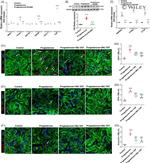









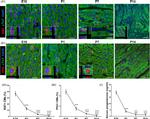



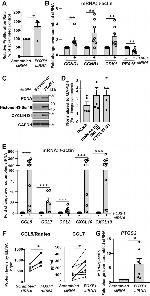
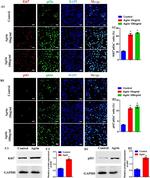


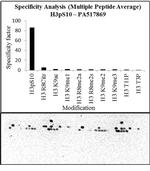
![]() histone
histone

